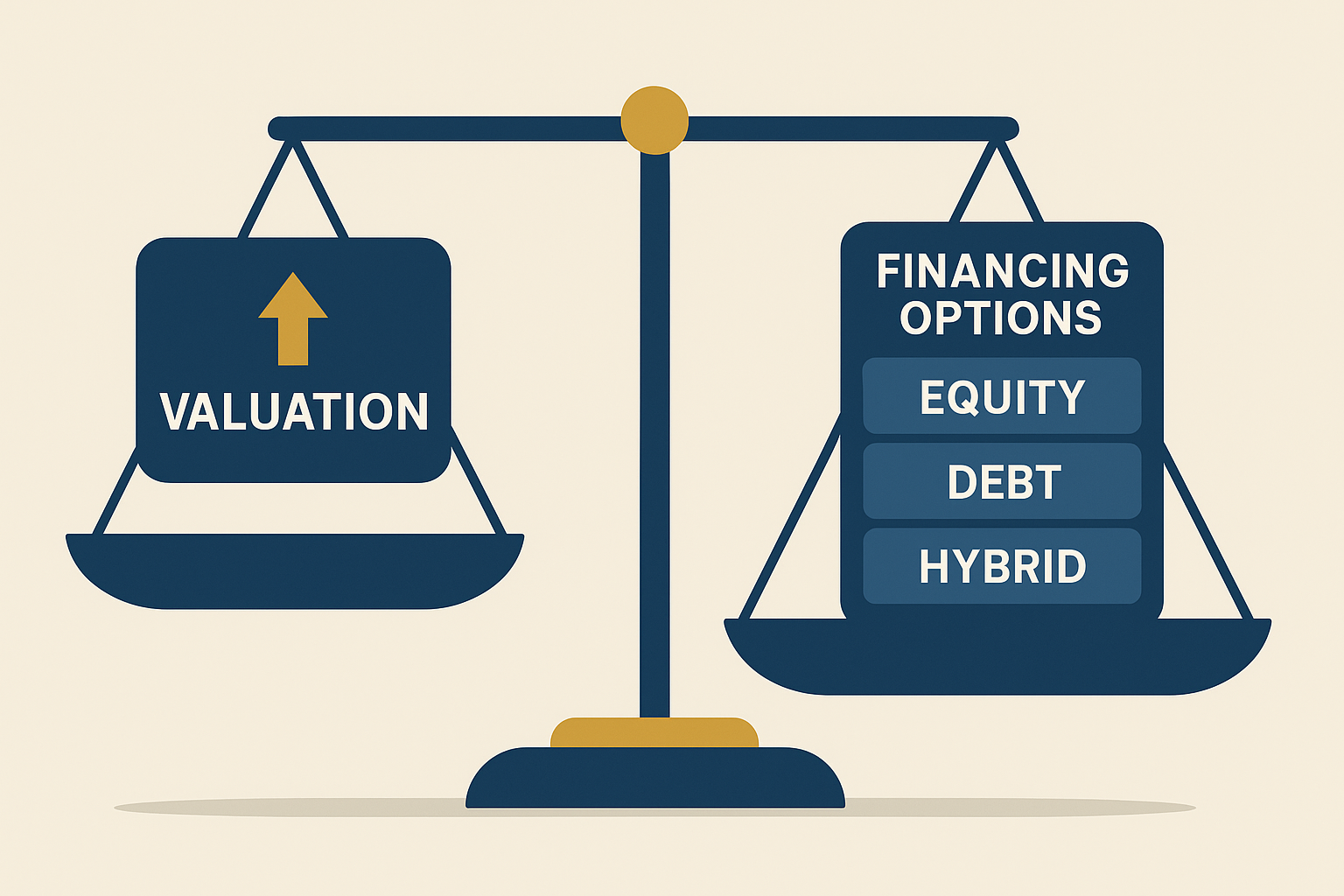1 (800) 584-0324
When raising capital, one of the first questions investors and lenders ask is: What’s your business worth? The answer directly impacts the type and amount of financing you can secure.
Understanding the link between business valuation and financing helps you negotiate better terms, attract the right partners, and avoid giving up too much ownership or taking on unsustainable debt.
Why Business Valuation Matters in Financing
- Equity investors use valuation to decide how much ownership they’ll receive in exchange for capital.
- Lenders consider valuation (assets, earnings, and growth potential) when determining collateral and repayment capacity.
- Alternative funders (e.g., mezzanine lenders, revenue-based financing) weigh valuation alongside growth prospects to set terms.
In short: your valuation defines your financing menu.
Business Valuation Financing: Key Methods
- Asset-Based Valuation
- Focuses on tangible and intangible assets.
- Relevant for asset-based lending or equipment financing.
- Focuses on tangible and intangible assets.
- Earnings Multiples / EBITDA Valuation
- Uses multiples of EBITDA (earnings before interest, taxes, depreciation, amortization).
- Common in private equity and mid-market financing.
- Uses multiples of EBITDA (earnings before interest, taxes, depreciation, amortization).
- Discounted Cash Flow (DCF)
- Projects future cash flows discounted back to present value.
- Popular with investors assessing growth companies.
- Projects future cash flows discounted back to present value.
- Market Comparables
- Benchmarks against similar companies’ valuations.
- Useful for startups pitching VCs.
- Benchmarks against similar companies’ valuations.
How Valuation Affects Financing Options
| Valuation Level | Financing Path | Why It Fits |
| High Valuation | Equity funding (VC, PE) | Investors accept smaller % ownership for large checks |
| Moderate Valuation | Mezzanine or hybrid financing | Bridges capital gaps without excessive dilution |
| Low Valuation | Debt financing (bank, SBA, CSBFP) | Ownership dilution would be too costly |
Improving Your Valuation Before Seeking Funding
- Strengthen financials: Improve margins, stabilize recurring revenue, and reduce costs.
- Demonstrate growth: Show a clear pipeline of customers, contracts, or expansion plans.
- Professionalize reporting: Lenders and investors want clean financial statements.
- Highlight intangible assets: Brand, IP, or proprietary tech can boost multiples.
- Diversify revenue: Reduce reliance on one product, customer, or market.
U.S. vs Canada: Valuation and Financing Landscape
- United States: Startups often emphasize growth potential, with VCs tolerating high valuations for large markets. PE firms rely heavily on EBITDA multiples.
- Canada: More conservative valuations—BDC and CSBFP loans often base terms on tangible assets and cash flow, making debt more accessible than high-equity valuations.
Practical Example
- A SaaS company valued at $20M raises $5M in equity for 20% ownership.
The same company, valued at $10M, would need to sell 33% for the same $5M—leading founders to consider mezzanine or debt instead.
Reference Summary
| Article Section | Suggested Reference |
|---|---|
| Definition & Methods | Investopedia, Wikipedia |
| DCF & WACC Detail | Investopedia |
| U.S. vs Canada Dynamics | Reuters |
Ready to align your business valuation with the right financing strategy? Agile Solutions helps companies in the U.S. and Canada assess valuation, prepare investor-ready materials, and secure capital tailored to their growth goals.
👉 Book a consultation today at agilesolutions.global or email us at info@agilesolutions.global
#BusinessValuation #FinancingStrategy #DebtVsEquity #GrowthCapital #BusinessFunding #PrivateEquity #VentureCapital



